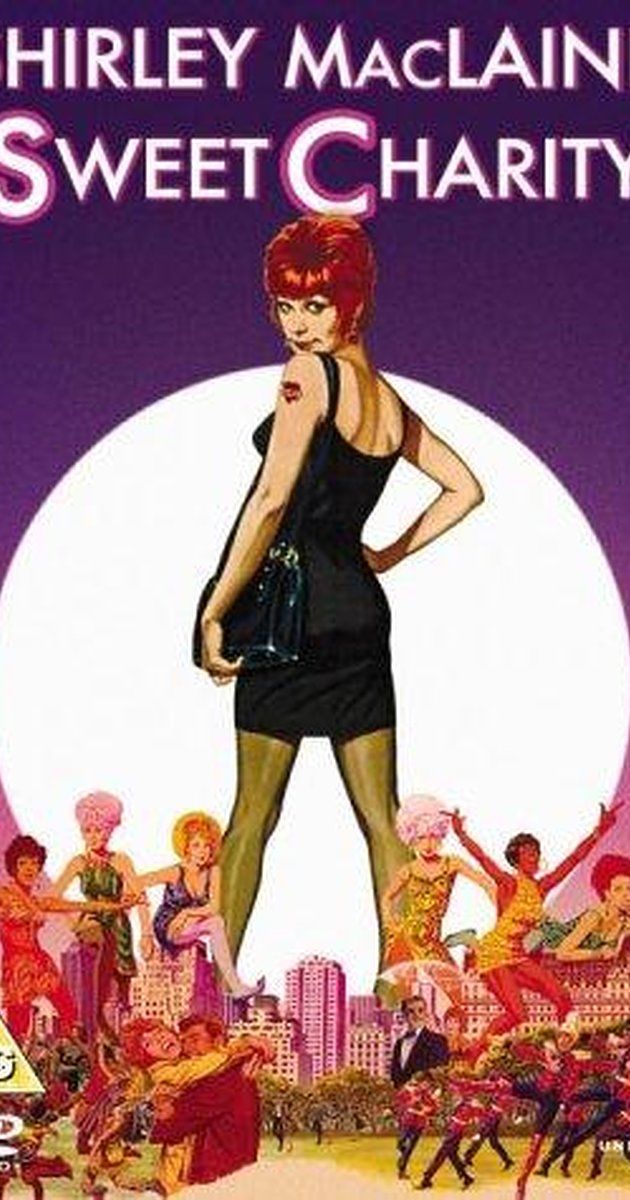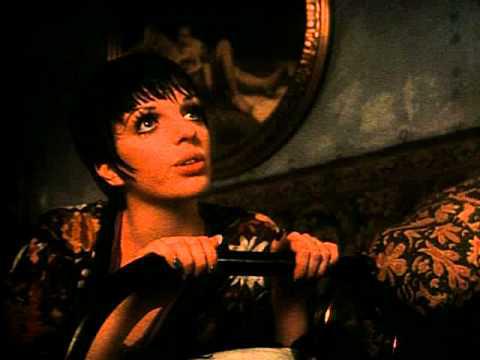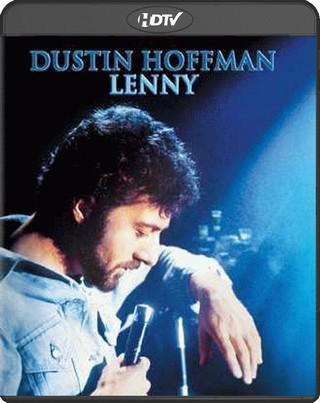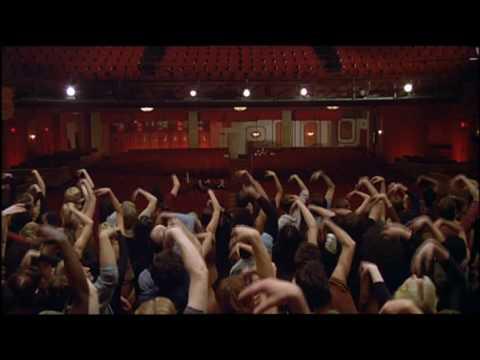Choreography Isn’t Just For Dancing
The Films of Bob Fosse
Although Bob Fosse had served as a performer and choreographer for several films, virtually all of his early success and recognition came from the theatre where he would ultimately win eight Tony Awards for choreography (a record that still stands) and one for direction. It is one of the great semi-tragedies of the entertainment industry that Bob Fosse should parlay his extensive experience into the film director’s chair and simultaneously leave an impressive but ultimately sparse celluloid legacy. Even with such a small cinematic body of work, the fact that Fosse was a supremely talented director with a unique vision that crossed over from stage to screen is close to indisputable. Although he only directed five films during his lifetime, which ended with a fatal heart attack in 1987, Bob Fosse was nominated for the Academy Award as Best Director three times and in those same years, his films were nominated for Best Picture.
What is key, with regard to Bob Fosse’s film work, was his ability to take what he knew about performance and the theatre and how he applied that same craft to that other medium.
A very quick sidebar before proceeding—it’s only fair that an artist cannot and should not only be judged by his own work alone. A true gauge of inventiveness and creativity is also achieved when compared with contemporaries. It is therefore interesting to note that the year Fosse took home the Academy Award for Best Director, 1972, was the year of The Godfather. It is even more fascinating that in all three years for which Fosse received a nomination for Best Director, Francis Ford Coppola received his first three nominations in the same category. If you’re keeping score, the final tally was one for Fosse (Cabaret over The Godfather, 1972), one for Coppola (The Godfather Part II over Lenny, 1974), and one for Kramer vs. Kramer (over All That Jazz and Apocalypse Now, 1979).
So how did Fosse handle the transition from dance and stage to film, and how did he manage to do so with such success, to the point where he ultimately wielded the confidence and vision to choreograph and predict his own death? The obvious answer is in his talent, but if you look at the body of cinema work, you can see a creative mind changing the way it looks at the world and how it interprets outside events into a structure which is much more suited to the “safety” of the screen than to real life. After all, a movie is just a movie. Horrible things happen to characters in films all the time but the actor walks away from the set at the end of the day. What is key, with regard to Bob Fosse’s film work, was his ability to take what he knew about performance and the theatre and how he applied that same craft to that other medium.
Stage to Screen: Sweet Charity
It should be no surprise that Fosse’s first film as a director, Sweet Charity (1969), was an adaptation of a show that he had directed and choreographed on Broadway. In effect, it was something of a safety net to get his feet wet with material that was already extremely familiar to him. However, despite some good notices for its star, Shirley MacLaine, it was not a box office success. Viewed today through the lens of hindsight, it holds up fairly well but is dated and fits the stereotypical mold of the “traditional” movie musical quite well.

It’s significant to recognize the specific turning points in the evolution of the musical film. First and blatantly foremost was the invention of sound. In those early talking films, song and dance were interludes to the main plot, often taking place in a setting where it was logical. Think of The Jazz Singer, credited as being the first truly talking picture, where Al Jolson performs his act on a stage before an audience (“You ain’t heard nothing yet!”). Those early “all-singing, all-dancing” films were just slightly above filmed stage performances. That soon led to innovations derived from the technology of film, specifically the camera and the ability to shoot dance sequences from angles that previously were not available to the viewer. Think of the classic camerawork of Busby Berkeley and how he took the camera from a horizontal plain to a vertical one and planned his choreography accordingly.
The next evolutionary step was the idea that songs should actually be a part of a film’s plot, thereby adding to the forward progress of the story instead of just being designated points in the narrative where a song could fit. The song and dance were now expressions of emotion that served the characters and the story, a format that has become the customary way of thinking about musicals. Actors break out into song on street corners, in libraries, coffee shops, trolley cars, etc. with a surrounding sea of humanity often joining in intricately choreographed dances. From films like Top Hat all the way to the openings of the Austin Powers movies, suddenly the man on the street is a world class hoofer.
Song and Dance on Stage within Realism: Cabaret
Fosse’s next film is the seminal Cabaret (1972), another adaptation of a popular stage musical albeit one that Fosse did not direct for Broadway. Noticeably, in a departure from the stage version and in a similar manner of early musical films, all of the musical numbers except one take place on a stage in the Kit Kat Klub, a setting where once again one would logically expect to see song and dance routines. Given the subject matter and its depiction of a bohemian, pre-Hitler Berlin, Fosse goes for realism (a concept not exactly synonymous with movie musicals) and resolves this incongruity by taking a step back within the genre itself. With only his second film, Fosse has rediscovered an older cinematic language and simultaneously made it more contemporary. The film’s realism and the knowledge of what is shortly to come for Berlin and the world in the time that the film depicts is what allowed it to succeed in an era when nonanimated musicals had all but disappeared in the world of Watergate and Vietnam.

In a classic overstatement of underappreciation, the year of Fosse’s Oscar win for Cabaret also saw him receive the Best Director Tony Award for Pippin as well as an Emmy Award for directing the Liza Minnelli television special Liza with a ‘Z’. This stunning achievement for someone still so relatively unknown was unheard of in its time.
With Lenny (1974), Fosse took another step into the world of cinema and away from his home in the world of song and dance. Once again, his film pulls no punches. Its stark portrayal of stand-up comedian Lenny Bruce by Dustin Hoffman is brutal at times, but it is possible to feel Fosse’s touch in the staging. Bruce was still a performer, albeit a different type than Fosse was typically associated with, but he had to work to connect with an audience the way any singer or dancer would. Fosse’s own connection with that common bond between all those who make their living by performing and entertaining others comes across truer to life thanks to long sequences that highlight Bruce the performer. In that way, for better or worse, the film serves more like a documentary of the man than the various available footage of the actual Lenny Bruce made within his lifetime.

Photo by Wikipedia.
The year of Fosse’s Oscar win for Cabaret (1973) also saw him receive the Best Director Tony Award for Pippin as well as an Emmy Award for directing Liza Minnelli in Liza with a ‘Z’. This stunning achievement for someone still so relatively unknown was unheard of in its time.
The Mortality Calling: All That Jazz
Next up in the film canon of Bob Fosse is All That Jazz (1979) and here is where the gloves really come off. The story goes that after his first two heart attacks, which occurred within days of each other, Fosse was so shaken that he went around to all of his friends and associates with a tape recorder and interviewed them about what went through their minds when they had heard that he, Fosse, was ill and possibly dying. Without going into all the details best left to his biographers, the honest answers he insisted on tortured Fosse into a near-suicidal state. Instead of doing himself in, the man turned his energies into what is arguably the best film of his career and without a doubt the most personal. Winner of the Palm D’Or at the Cannes Film Festival, All That Jazz is the work of someone obsessed with his legacy and an incredible need to purge himself of his demons by throwing them all out there for the world to see.

The audience watches as Joe Gideon, Fosse’s alter ego, pushes himself up to and over the edge with women, pills, and relentless work. While these events may mirror events in Fosse’s own life, the truly interesting scenes involve Gideon’s conversations with Angelique, who is revealed later to be either his guardian angel, the embodiment of the Angel of Death, or both. It is in those scenes where Fosse, through Gideon, tries to explain to the world what drives him and why he behaves the way he does. It is a unique method of self-analysis, for Fosse is saying that while he knows that he is self-destructive and abusive towards those he loves, he truly does care about them. It’s just that the talent he possesses rises to the forefront and his need for applause must be appeased, hence the incredible drive and workload which ultimately destroy him.
Although there are musical elements, presented in the context of rehearsals for a Broadway show or as more intimate staged moments, the film ends with a spectacular production number that is both classic and full of intentional clichés. Eight years before his actual death, Fosse foreshadows his own demise but does it his way and in his style, which he acknowledges as being sometimes brilliant and sometimes painfully overdone. To the viewer, it is unclear whether or not the character of Joe Gideon is actually dying or just hallucinating until the final vision of Angelique appears with open arms, welcoming him to the other side and the film snaps back to “reality,” where Gideon is zipped into a body bag. It is one of the memorable endings in cinema, mainly because the combination of the suddenness with which the transition occurs, the image itself, and the present-day knowledge that this is indeed how Fosse’s own life would end is both eerie and amazingly powerful.
Fosse’s last film, the stylized Star 80 (1983), can be viewed as a reflection of himself in the context of a star-maker. The tragic true story of a Playboy centerfold and model and her dysfunctional relationship with a man who jumpstarts her career and then tries to exploit it, is not hard to judge in retrospect that what appealed to Fosse were the concepts of fame and the side effects that it can have on relationships. Having already explored this in his previous film with regard to himself, Star 80 reflects his perception of how he affected those who surrounded him for better or for worse. His well-documented relationships with actress/dancer Gwen Verdon and later Ann Reinking, as well as the numerous award-winning performances he coaxed out of his actors support that notion. The film itself is so generally unpleasant precisely because it stays true to its subject and it can easily be interpreted as a coda to Fosse’s career, at least in the movies.
One of the laments about Fosse’s life and career is that so much of his original work in live theatre is lost to posterity thank to its fleeting in-the-moment nature. Old footage, stills, revivals and tributes by those who knew or were influenced by Bob Fosse are helpful in understanding the man’s greatness, but it is only through his films and the inherent intimacy of the work that his own hands-on imprint on character and narrative is accessible. Fortunately, the films are available to demonstrate the endless wells of talent and resources the man had at his disposal and the emotional roller coaster that he rode and harnessed to be able to produce his art for the masses.









Comments
The article is just the start of the conversation—we want to know what you think about this subject, too! HowlRound is a space for knowledge-sharing, and we welcome spirited, thoughtful, and on-topic dialogue. Find our full comments policy here
Dan, thank you for this wonderful essay and reminder that Fosse's film legacy, despite a very short output, remains unmatched. When I think of the wealth of extraordinary films from the 70's, I can't imagine Cabaret, Lenny and All That Jazz not being part of the conversation. All 3 are masterpieces of the medium fueled by a man who was a true artistic genius!